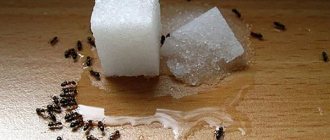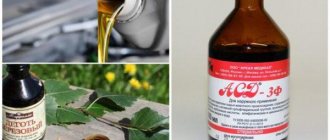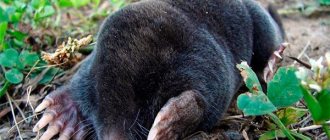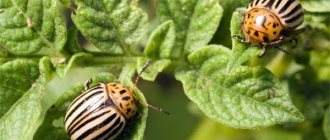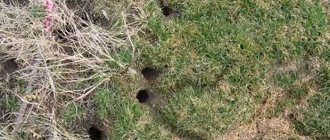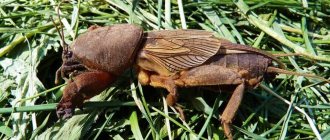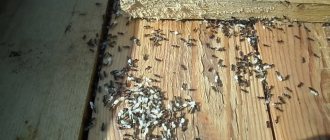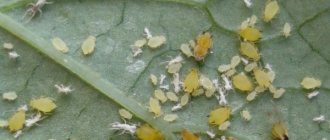Reasons for the appearance of aphids in the garden
With the beginning of spring, many gardeners begin to notice the presence of parasites such as aphids in their plantings. Of course, they are interested in where such a misfortune comes from. The main reason for the appearance of aphids in summer cottages is:
- purchasing and planting infected plants,
- wind transfer of insects from neighboring areas,
- transfer of larvae by ants, on animal fur or by people themselves,
- soil damage by aphid larvae brought from other areas,
- lack of timely measures taken for processing in the garden or vegetable garden.
How do aphids get into a summer cottage?
It is impossible to predict whether the vegetable garden and garden will be susceptible to aphid invasion. There are more than four thousand species of these insects. Moreover, they all feed on different plants. Whatever grows in a bed or garden can be occupied by parasites of different types at the same time.
Aphids enter a summer cottage in several ways:
- Moves from neighboring gardens. If there are infested plots of land in the vicinity, aphids will quickly begin to destroy the crops closest to them. The movement of insects occurs due to gusts of wind. The parasites are only 0.5-5 mm in size, so they are easily airborne.
- Arrives at the site. The females of some aphid species have wings. They can fly long distances. One individual will be enough for the population to increase more than a hundred times in a few days.
- Carried by ants. Honeydew is a favorite treat of these insects due to the large amount of sugar it contains. Ants protect aphids from other insects, transport them to new places, and even hide them in an anthill at low temperatures.
If the cottage is located near a deciduous forest or field, the likelihood of parasites increases significantly. Elms, hazel, clover, cornflowers, and legumes are the favorite plants of pests.
This is interesting! The symbiosis of ants and aphids has developed since the beginning of time. Many amber fossils, more than several million years old, have been found in which ants are frozen next to aphids.
What types are there
This pest can be easily identified by these signs:
- Soft and translucent body without chitinous cover;
- The color of the insect completely depends on the plant on which it parasitizes, so there are black, green or white shades;
- The size does not exceed 2 mm;
- Body shape directly depends on the type of insect;
- The body of each insect is decorated with soft short fluff, and minor asymmetrical tubercles perfectly complement the appearance of each individual;
- Some insects have wings;
- Due to the presence of thin and long legs, aphids can crawl or jump, and the organs of touch are small antennae;
- Often individuals do not have distinct sexual characteristics, but there are some specimens that have received the gene responsible for such a mutation. Thanks to it, it is possible to accurately determine whether a female or a male is in front of the student.
During the winter, aphids lay eggs, from which new individuals hatch in the spring. It is not of fundamental importance for these insects to parasitize young seedlings, seedlings or trees. Scientists identify the following types:
- green, often found on seedling sprouts,
- white, affecting indoor plants,
- black or universal,
- floral, so named because of its habitat preference.
general information
In nature, there are at least 450 varieties of aphids, but in our area the most rampant aphids are green, black, cotton and helychrysed aphids. Green prefers to suck juice from fruit trees, berry bushes and garden flowers. Black does the same mainly on legumes. Its relative, the cotton aphid, attacks cucumbers, melons, watermelons, zucchini and pumpkins. The helichrys aphid prefers to destroy stone fruit varieties, red clover plantations and beets.
Aphids can easily be called a ubiquitous parasite. She lays eggs anywhere, and they calmly wait in the wings in absolutely any conditions. The larvae are no less tenacious. They live underground, under the thick bark of trees and, of course, in open places. The life of the aphid butterfly is short - two weeks at most, but during this time each female manages to lay up to 150 eggs.
Signs of aphids
Affected plants cannot produce a good harvest, so most gardeners are interested in the question of signs of damage to green spaces by aphids. Depending on the type of insect, the following signs of damage can be identified:
- the plant begins to dry out,
- its leaves begin to turn yellow and curl into a tube, resembling a house,
- underdevelopment of fruits,
- deformation of branches,
- sticky film of white or yellowish color on the surface of buds and leaves.
The active breeding period for aphids is considered to be the beginning of summer. The offspring appears in this case with wings, which allows them to cause colossal damage to all nearby plants. Insects move from a dead bush to a nearby healthy bush and destroy it.
Symbiosis with ants also contributes to the spread of aphids throughout the area. The insect secretes honeydew, which ants adore. To get more sweet liquid, ants guard and transfer it to another territory. When ants appear on their site, many gardeners begin to carefully check the plantings for the presence of aphids.
Additional tips and tricks
- A home remedy for aphids is selected depending on the degree of damage to plants and the area of the area susceptible to insect attack. In the case of indoor flowers, it is enough to cut off part of the foliage or stem, or maybe just throw it away and buy a new one. Simple solutions containing soap or soda are suitable. In the garden, pruning leaves is not always effective, so it is worth combining different methods of insect control.
- The ineffectiveness of the products is indicated by the continuous reproduction and spread of insects. If folk remedies for aphids do not help within a week, you will have to resort to chemical insecticides. In high concentrations they are not safe for health, but are highly likely to help get rid of pests.
Controlling insect pests is a headache for summer residents. The accumulated experience helps to cope with aphids using traditional methods that have been tested by time and proven to be effective. A variety of fighting methods makes it possible to choose what is most convenient at the moment.
What harm does aphids cause?
It can destroy any plants, which is why gardeners spend so much time fighting this pest. The colossal harm caused by these insects is very difficult to even imagine. Thanks to aphids, irreversible deformation of leaves and shoots occurs. The condition of the crops grown is noticeably deteriorating. The pest sucks out the nutrient fluid, without which the crop cannot develop and bear fruit.
When affected, widespread fungal diseases can be observed. Plants noticeably weaken. During the cold period, such a planting very often simply dies, not having the strength to cope with weather conditions. There is no need to talk about productivity when affected by aphids. At best it will be meager, but most often the crop does not bear fruit.
How to get rid of aphids forever
Most gardeners look for universal remedies against aphids on Internet forums, but often a remedy that is effective in one case will give mediocre results in another.
Purchased funds
By purchasing aphid preparations in specialized stores, you can completely get rid of this pest. Getting rid of parasites of this type is possible thanks to chemical, biological or folk remedies. They differ in their operating principles, but their results are almost the same.
Chemical
Using insecticides, you can get rid of aphids and their larvae, as well as eggs. The main disadvantage of chemical control is the negative impact that will have on the plant itself. The use of this type of effective means should be approached very carefully and carefully, following all the manufacturer’s instructions indicated on the packaging. Among the most popular drugs to combat parasites:
- "Aktara"
- "Inta-Vir"
- "Tanrek"
- "Decis Profi"
- "Commander"
- "Prestige",
- "Koragen"
- "Double effect"
Some of these products will be effective when treating a specific type of planting, while others have a universal effect. Insecticides can be treated before bud formation begins. During this period, the use of such drugs has the most powerful effect,
Biological
This type of anti-aphid remedy includes fungicides, which have proven themselves to be quite good at killing pests. The most popular drugs in this case will be:
- "Jaguar",
- "Aktofit"
- "Fufanon"
- "Entobacterin"
- "Fitoverm".
It is better to start treatment with these drugs in the morning or evening. Treatment is most effective in calm and windless weather. The procedure must be carried out no later than one week before harvest. It is important to take into account that, like any other living organism, aphids develop immunity to the substances used against them, so treatment must be carried out by changing the preparations.
Traditional methods
Many folk remedies help get rid of garden pests. For example, crops affected by aphids, characterized by hard and dense leaves, can be eliminated from their harmful neighborhood using ordinary water. Regular summer showers or watering will wash away parasites. They won't be able to climb back. In this case, water must be supplied from a hose under pressure.
A rather concentrated product that must be used very carefully is tobacco infusion. To do this, pour boiling water over tobacco leaves or ordinary shag and leave for a day. If it is not possible to purchase such ingredients, you can completely replace them with ordinary cigarette butts. The resulting composition must be filtered and sprayed on the plants. You can spray the plantings at any time, but no later than a week before harvest.
Aphid baits and traps
Baits and traps will provide reliable protection against aphids. One type of effective trap for these pests is a sticky belt. This device is placed under a bush or tree, which will not make it possible to get to the plantings.
Ants can come to the aid of aphids. To neutralize such “helpers,” you need to mix a spoonful of minced meat with ground borax and place the mixture near the anthill. Once caught in such a trap, insects die within 5 hours.
Soap solution for aphids
You need to dissolve 5 tablespoons of liquid soap or detergent in a liter of water. In case of emergency, you can even use washing powder. You need to choose detergents without fragrances, as this will only attract aphids. Each plant is carefully treated with this composition using a sprayer.
If you have tar soap on your household, rub it on a grater and dilute it in a liter of warm water. After this, you need to add a little soda. The resulting solution is used to treat the plantings according to the method described above.
Ash from aphids
Ash is also great for fighting aphids. A glass of it can be diluted in 5 liters of water, left for 12 hours and processed. If necessary, the procedure is repeated after a couple of weeks.
Recommendations for using natural aphid repellents
There are a lot of effective methods of combating aphids. The main rule for using any means, both chemical and natural, is to use them wisely. There are several nuances to using natural pest repellents:
- Few traditional methods give instant results. You will have to carry out from three to ten procedures with a frequency of 1-2 times a week. Recipes must be alternated.
- The treatment is carried out only in the evening and special attention is paid to the lower surface of the leaf plates. At the very beginning of the growing season, it is better to use chemicals, and at a later date, before and after harvesting, use softer and harmless natural products.
- Folk remedies are appropriate only on small personal plots. They are not used in agricultural production conditions.
If after using your own preparations the insects do not disappear or the situation worsens, then it is better not to delay and use insecticides. On store shelves you can find biological products that have a milder effect and do not harm fruit and vegetable crops, but cause great damage to aphids and other harmful insects.
If after one treatment the aphids have not disappeared from the leaves, the procedure should be repeated at least one more time.
When using traditional methods, you can get rid of not only pests, but also various fungi and rot. They have an antiseptic effect and at the same time serve as additional nutrition. But you need to use such drugs with caution, wear a mask and gloves, and wash your hands and equipment thoroughly after handling. To prevent aphids from returning, it is necessary to simultaneously treat all adjacent areas.
Author of the article: Kamenkov Igor Dmitrievich
- Related Posts
- Wasps in the country house, garden, vegetable garden? How to get rid of them once and for all
- How often do you need to water and what to feed tomatoes to get a good harvest?
- Valerian will help against cabbage pests: tested by myself
« Previous entry
How to get rid of aphids using ammonia
Ammonia will help get rid of aphids for a long time. They treat the following plantings:
- roses,
- raspberries,
- pepper,
- dill,
- fruit trees,
- cabbage,
- currants
- cucumbers,
- viburnum,
- tomatoes, etc.
In no case should ammonia be used in its pure form, otherwise excess nitrogen will lead to the death of leaves and destruction of chlorophyll. Dissolve 5 ml of ammonia in a liter of cold water. The solution must be thoroughly mixed and a soap base added to it. After this, you can process all existing plants. Aphids cannot tolerate the smell of ammonia, so they will quickly leave the summer cottage. When the smell disappears, the procedure will need to be repeated again.
Unusual ways to control insect pests
Over the years of fighting aphids, summer residents have used many unusual and controversial methods to get rid of aphids. To see the result, each method must be applied several times. Sometimes you can combine different insect repellents.
Coca Cola
The drink contains phosphoric acid, which corrodes the bodies of insects. 2 liters of Coca-Cola dissolve in 7 liters of water. Gases are pre-released from the drink. It is not recommended to use cola in its pure form, as a large amount of sugar can attract other insects to the summer cottage.
Essential oils
They have a strong odor and high concentration. Rosemary helps kill insect larvae. They can be used to spray the soil containing aphid eggs. Essential oils of mint and neem kill pests. Cloves repel parasites due to their pungent odor.
Esters cannot be used in their pure form. They dissolve in cream or milk. It is enough to add 5-10 drops of essential oil to 1 liter of liquid. The leaves are wiped with the solution. It is recommended to wear gloves as the concentrated ether may corrode the skin.
Fumigation
An effective and simple way to kill insects is smoke. Tobacco, burnt rubber, and mushrooms are used for fumigation. You can set a piece of rubber on fire in a pan and leave it to smolder under infected bushes and trees. This will kill the insects.
Vodka
To process flowers, you need to pour about 100 ml of vodka into 1 liter of water. It is advisable to add liquid soap to the mixture. For shrubs and trees you will need a higher concentration of ethyl alcohol - 300 ml of vodka per 1 liter of water.
Vodka against aphids - Effective recipes
Hellebore water
Hellebore is a perennial poisonous plant. Based on it, a product is produced to combat skin parasites. But it can also help against garden pests. Hellebore water is sold at the pharmacy. 100 g of product must be diluted in 5 liters of water. It is advisable to use such a solution for spraying plants no more than once a week.
Lime
The method is well suited for protecting trees from aphid attacks. Whitewash is applied to plant trunks in the fall, before aphids lay eggs. To prepare the solution you need 2 kg of slaked lime and 10 liters of water. You can also buy a ready-made product in a specialized store.
Before whitewashing, trees are cleaned of moss and lichen using a brush with stiff bristles. Areas with damaged bark should be washed with copper sulfate.
Shampoo for animals
Flea products contain pyrethroids. These substances are similar in principle to insecticides. The solution using dog and cat shampoo should be weak enough not to burn the plant. For 10 liters you can use no more than 1 tbsp. l. facilities.
Potassium permanganate solution
Manganese strengthens the roots of flowers and makes the plant stronger. In addition, a solution of potassium permanganate effectively fights aphids. You need to dissolve a few specks of potassium permanganate in 10 liters of water. The plants are sprayed with the product from a spray bottle.
Milk with iodine
To combat aphids, only freshly prepared mixture is used. 30 drops of iodine dissolve in 100 ml of milk. Then 1 liter of water is added to the solution. The fat content of milk should not exceed 2.5%. High fat content can create a film of oil on plants that will not allow air to pass through. This method is effective only against adults. Milk with iodine has no effect on the laying of aphid eggs.
Prevention: what repels aphids
Herbs with a characteristic odor that repel various pests will also be an excellent option against aphids. They are boiled and processed, carefully spraying each planting. Experts recommend alternating herbal compositions so that the pest does not develop stable immunity against them. Herbs “unloved” by aphids include:
- basil,
- marigold,
- mustard,
- peppermint,
- larkspur,
- coriander,
- catnip,
- nasturtium,
- sagebrush,
- fennel and some others.
Insects and birds are natural enemies of aphids
Once in the garden, aphid-eating insects and birds help control the pest. To attract them, it is recommended to plant parsley, carrots, dill and aromatic herbs on the site.
Insects
Insects that feed on aphids are:
- ladybugs;
- lacewings;
- riders;
- earwigs;
- ground beetles, etc.
Daisies attract the attention of hoverflies, amaranths and nightshades attract the attention of ground beetles, and thickets of ferns attract the lacewing.
Earwigs live in placed pots with shavings and eat aphids. Larvae of lacewings and ladybugs can be purchased in specialized stores.
Birds
Small birds use aphids to feed their chicks, including:
- sparrows;
- tits;
- linnet;
- kings, etc.
To get rid of pests in the garden forever, feeders and birdhouses are hung up to attract birds, and containers filled with water are placed. If birds and insects are attracted, pesticides should not be used on the site.
How to get rid of aphids on roses
For rose bushes, aphids are a real disaster. You can save flowers from pests in different ways, which include:
- removal of damaged or diseased parts of bushes,
- wash the leaves monthly with soapy water,
- feed roses so that the bushes are strong and healthy,
- carry out treatment with ammonia.
Aphids on dill: how to get rid of them
Modern manufacturers offer many drugs to combat aphids, but will such a plant be edible? In this case, you should not use chemicals. It is better to give preference to proven biological products that are completely safe for the human body. The complex consisting of superphosphate and potassium chloride has proven itself to be excellent. Its proportions are 2:1. This mixture is dissolved in a bucket of water and treated by spraying.
Fighting aphids on peppers
To destroy the parasite on pepper, biological products and folk remedies, as well as chemicals, are excellent:
- "Aktara"
- "Karbofos"
- "Intavir"
- "Fitoverm-M"
- "Akarin" and many others.
When using purchased medications, you must strictly follow the dosage specified by the manufacturer. Only in this case will the maximum effect be achieved and the products can be safely consumed.
Getting rid of aphids on indoor plants
Indoor flowers suffer greatly from aphids, which can even cause death. The most common variant of infection is the purchase of a diseased flower. From this plant, the insect easily moves to healthy indoor flowers, which causes a lot of trouble for the owners. Getting rid of such a “guest” is not easy, but with due diligence it is possible. To do this, flowers are treated with soapy water or ammonia, and you can also purchase special biological products intended for indoor plants.
Where are the first impacts of aphids visible?
Aphid larvae feed on plant sap, and to do this they need to pierce the leaf membrane. The easiest way to do this is on flowers or young leaves. This is where the first signs of aphid influence appear. This suggests that young shoots and flowers need to be protected from aphids first of all.
Black ants carry the larvae from place to place. They feed on the waste products of the larvae, so they protect them in every possible way. Black ants carefully transfer the larvae to young leaves and even to neighboring plants. Surprisingly, during the winter they bring aphid larvae into their anthills, and with the arrival of spring they spread them around the garden. Be aware that if black ants appear in your garden, it means that aphid larvae have also appeared. You need to fight black ants just as mercilessly as you fight the aphids themselves.
Reviews
“Aphids are a real disaster for many summer cottages. When one summer resident takes her out at his place, she quickly moves to a neighbor. This year we just got together and processed our plots in one day. If the aphids come back, it won’t be anytime soon.”
Oleg, 39 years old, St. Petersburg
“My grandmother always collected aphids along with the leaves, and then burned them in the yard. But this was a half-hearted solution, since it was very difficult to collect all the pests and get rid of them, and aphids reproduce quickly. For several years now we have switched to chemical treatment. We use "Commander". These parasites have not been seen on our site for a long time.”
Marina, 28 years old, Boguchar
“Fighting aphids with traditional methods is not very effective in our area. Pests quickly get used to such products, and it is very difficult to remove them. We use "chemistry". It may be harmful, but it is effective.”
Yaroslava, 42 years old, Chaplygin
Natalia
Author
Ask a Question
Aphids cause a lot of damage to any plants they can reach. With proper care and timely treatment of plantings, it is quite possible to get rid of it. Health to you and your loved ones!
What to spray
Ammonia is considered an effective method. It cannot be used in its pure form; before use, ammonia (50 ml) is diluted with water (10 l). Sometimes ash and soap are added to the solution.
Dry weather is chosen for spraying; treatment can be carried out regardless of the stage of plant development. The procedure is repeated regularly at short intervals (about two weeks), since pests move and multiply quickly.
To get rid of insects on peppers, cucumbers, tomatoes:
- Kinmiks (during the growing season, spray with a mixture of 5 g of product and 10 liters of water);
- Fitoverm (1 ampoule dissolved in 10 liters of water);
- Entobacterin (to use it, the temperature must be +30°C).
Chemical insecticides
Insecticides can control aphids, as well as their larvae and eggs. Depending on the mechanism of action on insects, agents can be intestinal, contact, fumigants, or insecticides. The most effective:
- Aktara;
- Inta-Vir;
- Coragen;
- Decis Profi;
- Prestige.
Biological drugs
They are obtained by microbiological synthesis. Not everyone knows that insecticides are more dangerous than chemicals:
- Aktofit - as a result of damage to the nervous system, aphids do not use plant sap for nutrition and die after 48 hours;
- Fitoverm - used for treating indoor plants, as well as crops in the garden and greenhouse;
- Entobacterin – the effect of treatment is observed at temperatures above 30°C;
- Jaguar - designed to protect cereals.
Actofit is used in the fight against aphids.

